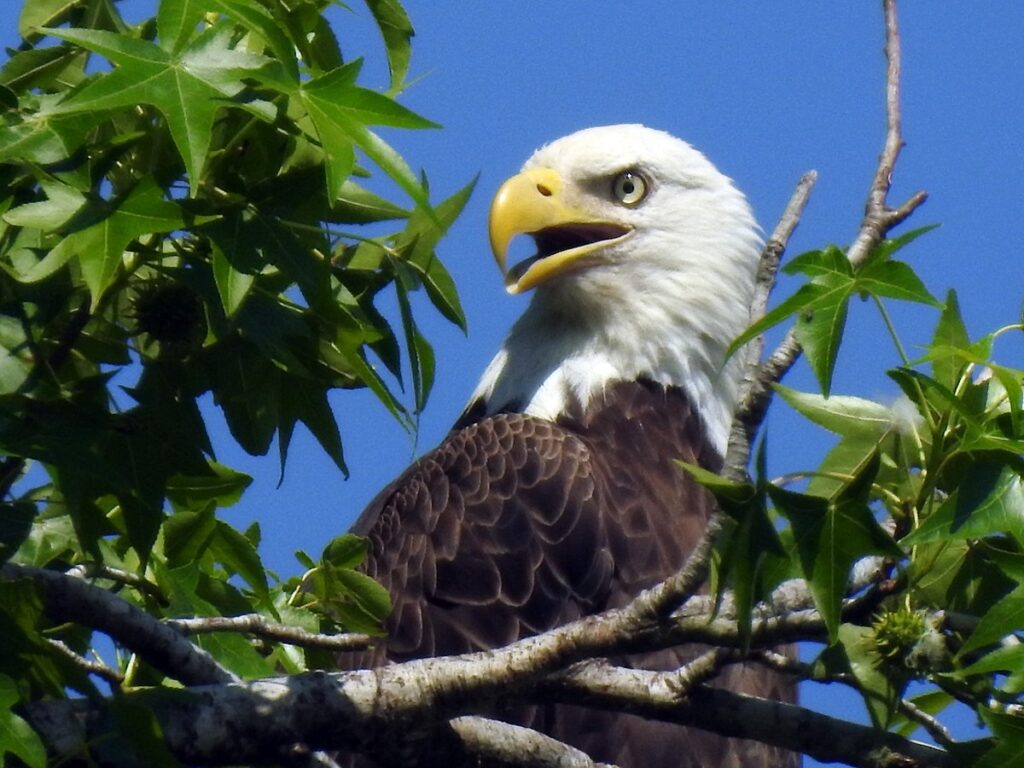By Luke Little
Hottytoddy.com intern
lblittle@go.olemiss.edu
Glancing through binoculars and panning across the treeline bordering Sardis Lake, a small white speck can be seen emerging from the vast sea of green pine. Upon further investigation, such a speck is not something to be overlooked. Often, it is the national bird of the United States.

Since the 1980s, the US Army Corps of Engineers has been performing bald eagle surveys at each of the four lakes surrounding the Oxford area. What began as initially tracking eagle migration patterns has since turned into a true conservation effort.
What was once an endangered species across the country has now become a permanent resident in the ecosystem of Sardis Lake. While it has not always been smooth sailing for the eagle population, they continue to hang their hat in North Mississippi.
Documentation of their migration goes back only to about the mid-80s, said Chris Gurner of the USACE, but bald eagles have been in the area for quite some time.

“Back in the 50s and 60, at the height of when the chemical DDT was being used around a lot of the fields around here, it was attributed to the loss of lots of eagles in the area,” said Gurner. “After that, the eagle population declined drastically, putting them on the endangered species list.”
In 1972, DDT was outlawed across the U.S., and the following year bald eagles were placed on the endangered species list under the Endangered Species Act of 1973.
Gurner says that the two factors in conjunction started allowing eagle populations to begin building back up again in the area.
The USACE currently performs bald eagle surveys at four lakes in the area, consisting of Sardis Lake, Arkabutla Lake, Enid Lake, and Grenada Lake. The winter months are generally nesting time for bald eagles, making it the ideal time for the corps to survey the majestic birds as they are perched high up in their nests. As the weather gets warmer leading into March, the eggs begin to hatch and the populations continue to grow.
“They generally do not nest in more populated areas, but that is not always the case,” said Andy Strickland of the USACE. “A lot of times they are nested near water, but we have also seen some nested at the top of an oak tree in the middle of a field.”
Since they were removed from the endangered species list in 2007, bald eagle populations in the area have grown exponentially. Sardis Lake is now the home to a number of permanent eagle residents living in the trees year-round.
This year, 28 eagles were spotted at Lake Enid, 26 at Lake Grenada, and four at Lake Sardis.

